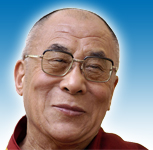What after Dalai Lama? Tibetan movement heads for crossroads
 Dharamsala, India - In the short wait before disembarking from a turbo-prop aircraft that has landed in India's lush Dharamsala valley, the Tibetan spiritual leader, the Dalai Lama, greeted passengers with gentle nods and a smile, offering a helping hand to a woman struggling with her luggage.
Dharamsala, India - In the short wait before disembarking from a turbo-prop aircraft that has landed in India's lush Dharamsala valley, the Tibetan spiritual leader, the Dalai Lama, greeted passengers with gentle nods and a smile, offering a helping hand to a woman struggling with her luggage.
Moments later in the airport, people knelt to press their foreheads to his hand, seeking blessings from their god-king as monks burned incense and Tibetan women in shuba robes performed dances for a traditional welcome. The peripatetic leader returned home in early March to the Himalayan hill town where he lives in exile after a month of travel, arriving nearly a week after Losar, or the Tibetan New Year.
For five decades since his flight from Tibet on March 17, 1959, after a failed uprising against Chinese rule, the 14th Dalai Lama has become the face of the Tibetan community for the world, has kept the Tibetan issue in the international spotlight and has become a star for his people.
A deity for Tibetans, the charismatic monk and Nobel Peace Prize laureate is key to the future of the troubled plateau.
But with hospitalizations for ailments including a surgery in October to remove gallstones, the 73-year-old lama's health has caused concern among exiled Tibetans. They are increasingly worried over his succession and the future of their movement for autonomy after the passing of their leader.
Such concerns are not unwarranted. The transfers of power to the Dalai Lama's new reincarnation are looked at as periods of upheaval in Tibetan history, the last coming in 1950 when the Chinese army invaded Tibet a month before the current Dalai Lama was enthroned.
The Dalai Lama belongs to the Gelug, or Yellow Hat sect, which is the most influential among four main traditions of Tibetan Buddhism. After the death of a Dalai Lama, it is the responsibility of the Gelug High Lamas and the Tibetan government to find the reincarnation.
The Dalai Lama has kept everyone guessing about his successor, sometimes saying he might be the last reincarnation, questioning whether a new leader was required, saying his reincarnation could be a girl and asserting the reincarnation would not be born under Chinese control, but "in the free world," to safeguard his people.
At the same time, Beijing has made its intentions clear that it could install its choice by claiming the power to approve high reincarnations in Tibet based on the precedent of such selections during the Qing Dynasty (1644-1912).
But since it would take at least 20 years before a new Dalai Lama is educated and groomed to take over the reins of power of the Tibetan government-in-exile, the Tibetan issue might well fade from the international spotlight.
Many Tibetans are looking at the 23-year-old Karmapa Lama - head of the main Kagyu, or Black Hat sect, who fled to India from Tibet in 1999 - as a leader of the movement in the interim.
Recognized both by the Dalai Lama and the Chinese government, the third-highest ranking lama who lives near the Dalai Lama in Dharamsala is looked upon as a regent who rules until the Dalai Lama's reincarnation comes of age.
Meanwhile, the Dalai Lama and the Tibetan government-in-exile assert there are several leaders to head the Tibetan community after the demise of the Dalai Lama and the political role would be looked after by the prime minister.
"The Dalai Lama is always succeeded by the reincarnation," said Samdhong Rinpoche, prime minister of the Tibetan government-in-exile. "We do not have any doubts or worries about the succession issue."
Rinpoche did not reveal details but said there was a well-planned succession.
"First of all, he [the current Dalai Lama] will lead a very active life at least 20 to 25 years," Rinpoche said. "... His Holiness will be succeeded by his reincarnation, and during the period the reincarnation grows, there is a definitive programme."
But some Tibetans worry that the movement could split under different leaders after the current Dalai Lama. Young Tibetan leaders who are increasingly critical of the Dalai Lama's "middle way," which advocates patient negotiation with China for autonomy, are likely to push for "Rangzen," or full independence, and some might even resort to violence.
"There is a great deal of anxiety that the struggle could take a violent turn as people are getting frustrated that even though we are making concessions, China has always given a negative response," said Karma Yeshi, a member of the Tibetan Parliament and a former Tibetan Youth Congress leader.
Tenzin Choeying - president of the Students for Free Tibet, India - said the Dalai Lama's strengthening of the democratic government was a wise way to prepare Tibetans to continue beyond him.
"The Dalai Lama institution is 500 years old, but Tibetans have been around for 3,000 years," he said. "The Tibetan struggle will go on even after His Holiness is not there."
Yet, as of now, the Dalai Lama is omnipresent in Dharamsala, which is also known as Little Lhasa. Quotes from his teachings and his images can be found in almost all homes, restaurants and shops as he spiritually sustains the Tibetan dream of returning home one day.
The exiled leader recently said it was his moral responsibility to work for the Tibetan cause until his death.
"Once all Tibetans return to Tibet and after the issue is settled, I will hand over authority to others," he asserted. dpa( )